Incense
For the aromas they emit, incense is burned. Your mind is guided toward reaching particular objectives by the incense's aromas. During a ritual, incense aids in meditation and spiritual guidance.
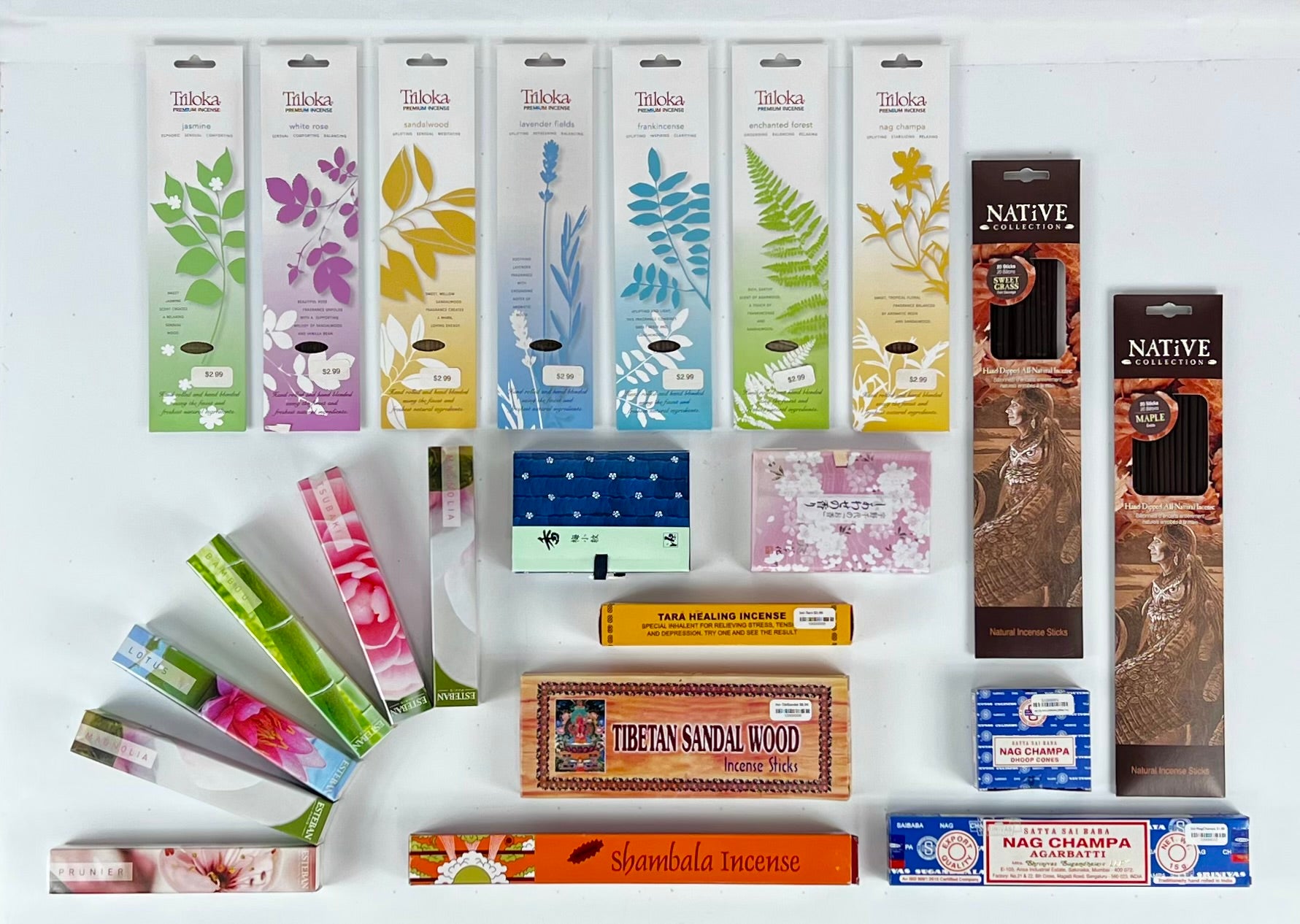
Our Incense Collections
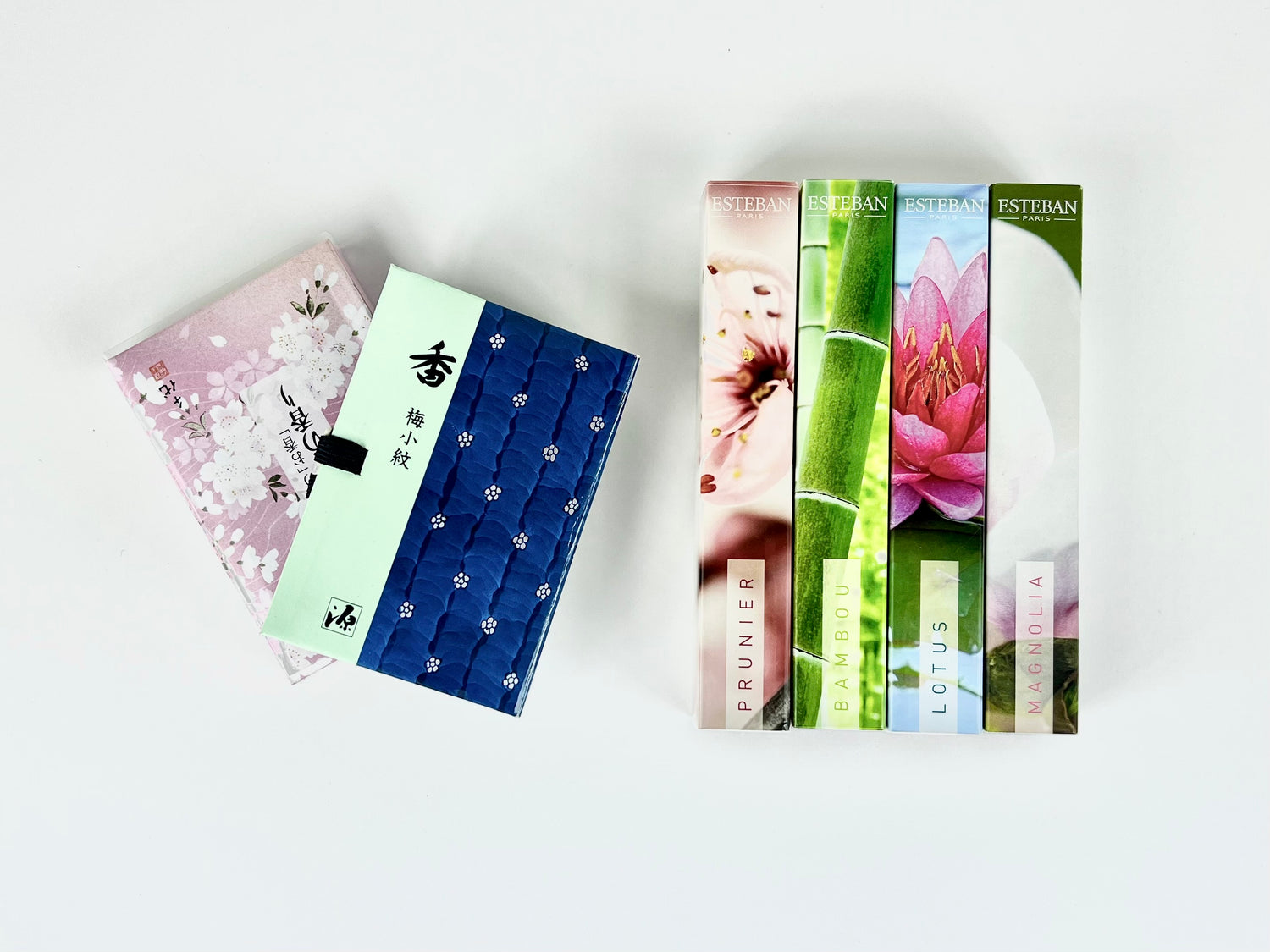
Japanese Incense
Sandalwood, agarwood, resin, and/or essential oils are used to make Japanese incense. Some types of incense are entirely created from plant-based materials, while others may use colors and fragrant oils that have been approved by the International Fragrance Association (IFRA).
In Store: Bamboo, Enchanted Forest, Frankinsense, Jasmine, Lavender Fields, Lotus, Nag Champa, Prunier, Sandalwood, Tsubaki, White Rose
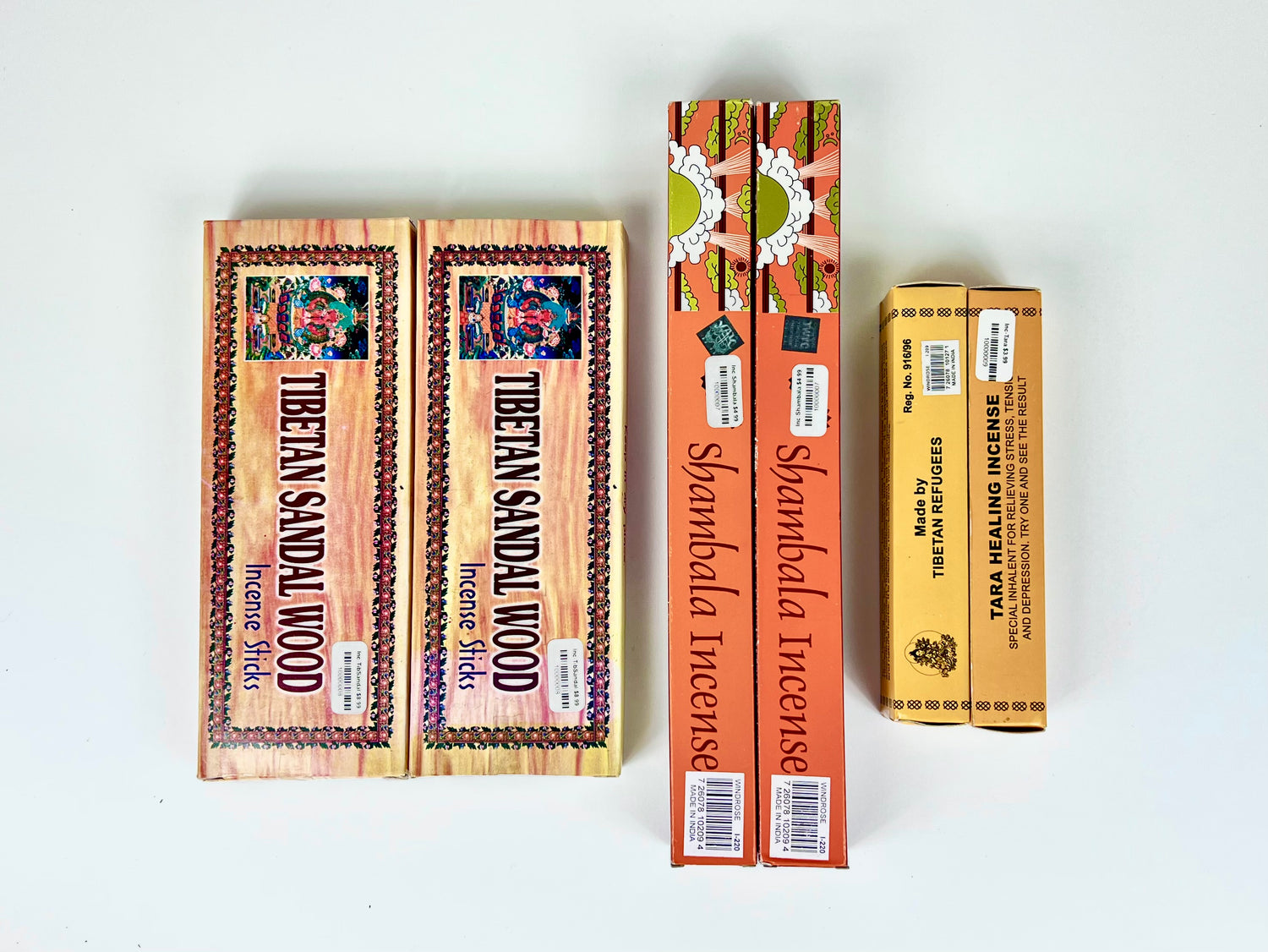
Tibetan Incense
In Tibet and the northern regions of Nepal, Tibetan incense is produced. An important aspect of Tibetan culture is represented by incense. These incenses have a distinctive herbal or "earthy" smell, and Tibetan incenses can have thirty components or more. Like most Asian incense, Tibetan incense is extruded into lengths or coils rather than rolled around a bamboo stick.
In Store: Shambala & Sandalwood
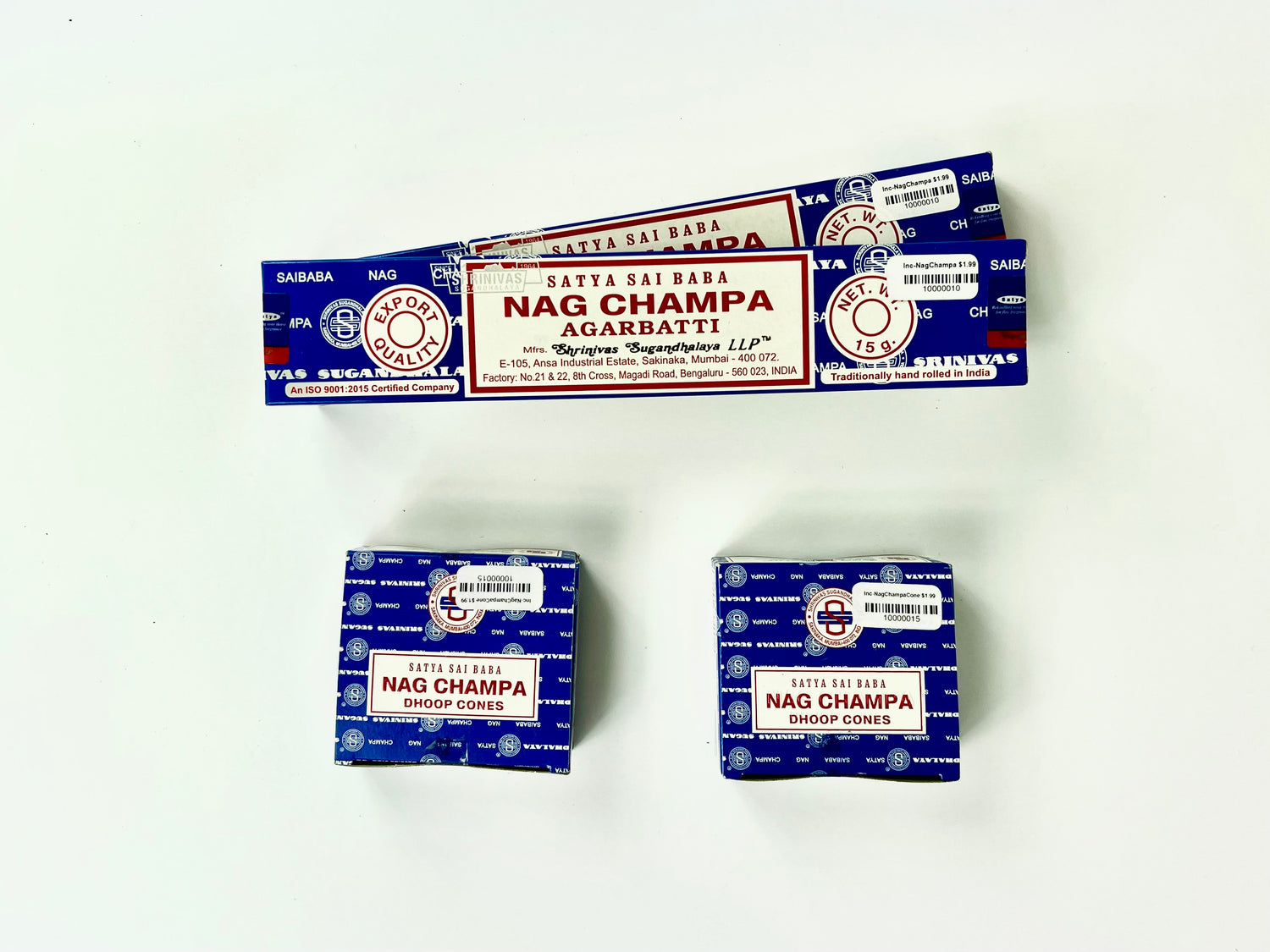
Indian Incense
In India, incense is used to aid in one's devotion. The incense's organic scents can lift your spirits in ritual practice. Within Hinduism, it is an especially utilized tool.
In Store: Nag Champa
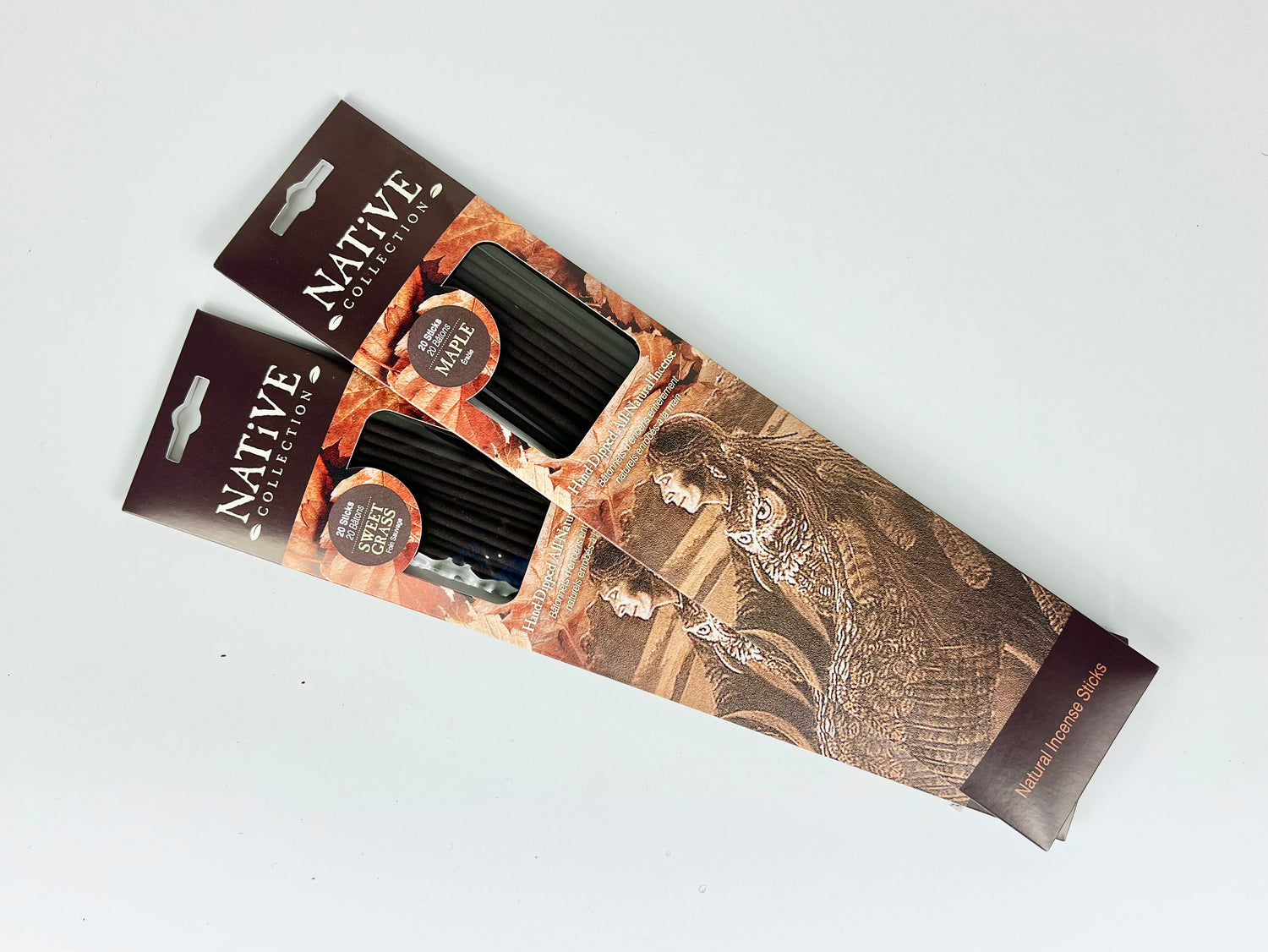
Native American Incense
Many Native American societies consider the burning of herbs or incense a sacred ritual. It is an act of protection, cleansing, and purification for both the physical and spiritual bodies. The smoke's impact is to drive away evil spirits in Shamanic rituals.
In Store: Maple & Sweet Grass
